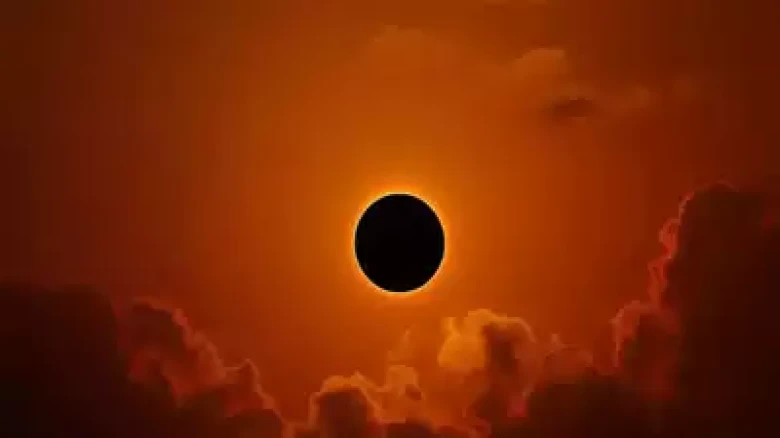Regional

This remarkable astronomical event is scheduled to occur on Saturday, October 14, 2023, coinciding with Mahalaya, the...
Digital Desk: Skywatchers around the world are gearing up for a celestial spectacle this weekend as a rare annular solar eclipse, also known as the "Ring of Fire," is set to grace the skies. This remarkable astronomical event is scheduled to occur on Saturday, October 14, 2023, coinciding with Mahalaya, the auspicious day marking the beginning of Debi Paksha, which holds immense significance for devotees of Maa Durga, heralding the countdown to the grand Durga Puja celebrations.
The Annular Solar Eclipse, also referred to as the "Ring of Fire," is a captivating occurrence when the Moon passes between the Sun and Earth. However, during this eclipse, the Moon is situated at its farthest point from Earth, creating a mesmerizing ring-like effect as it surrounds the Sun from our planet's perspective. According to Mitzi Adams, NASA Marshall Space Flight Center Heliophysics and Planetary Science Branch Assistant Chief, "It is like nothing you've ever experienced before. It's sort of like somebody puts a bowl on top of the earth right above where you're standing. In the middle of the day, it gets darker, but you can still see light around the rim."
While this celestial event promises a visual treat, it will not be visible to observers in India. However, those residing in the Western Hemisphere are in for a treat, as this celestial phenomenon will be visible along a narrow path that traverses the United States from Oregon to Texas, extending over Mexico's Yucatán Peninsula, parts of Belize, Guatemala, Honduras, Nicaragua, Costa Rica, Panama, Colombia, and Brazil. Additionally, a partial solar eclipse will be viewable from Alaska to Argentina.
For those fortunate enough to witness this awe-inspiring event, safety precautions are paramount. Staring at the sun, especially during an eclipse, can cause permanent eye damage. Specialized eye protection designed for solar viewing is essential for safe observation. Using a camera lens, binoculars, or telescope without a dedicated solar filter is strongly discouraged, as it can lead to severe eye injuries.
The timeline for this celestial spectacle begins with the commencement of a partial solar eclipse at 8:06 am PT, followed by the period of annularity, when the Ring of Fire will be prominently visible for approximately five minutes. The maximum eclipse coverage is expected at 9:18 a.m. PT. If you're unsure about the timing and visibility from your location, websites like the Great American Eclipse and TimeandDate.com offer detailed information to help you plan your eclipse viewing experience.
For those unable to witness the annular solar eclipse in person, NASA has you covered with a live stream of the event. The live stream will commence at 11:30 am ET (9:00 pm IST) on Eclipse Day, allowing viewers from around the world to enjoy this stunning celestial display from the comfort of their homes.
This weekend's annular solar eclipse offers an opportunity for people in the Western Hemisphere to marvel at the beauty of the cosmos. Remember to prioritize safety by using proper eye protection and consider tuning in to the live stream for a front-row seat to this extraordinary celestial event, a true gift from the universe to skywatchers and astronomy enthusiasts alike.
Leave A Comment